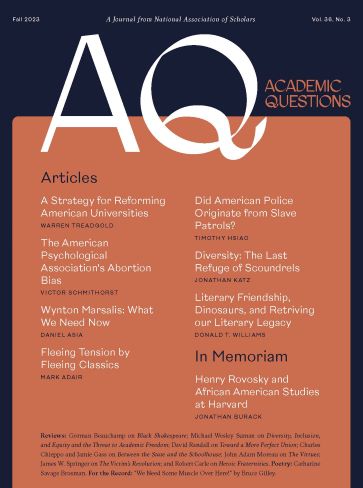The unjustly beleaguered General Michael Flynn has lately been catching some renewed flak for suggesting that the Jews under Nazi rule could have resisted deportation to the death camps since they greatly outnumbered any guards who had charge of them.
This raises the excruciating question of how much resistance is really feasible at any stage in a brutal, malevolent police state that uses both force of arms and force of law to isolate, demean, harass, and persecute segments of its own citizenry in a mental atmosphere saturated with lies and fear.
The deportations were not the beginning of the process of exterminating Jews. There had been years of dehumanizing propaganda and vicious misrepresentation, followed by various measures first targeting, then restricting, then excluding Jews from various aspects of public life, as even pre-teens can follow in the iconic Diary of Anne Frank.
Do Flynn’s remarks have something to say to our present moment? With deference to Leo Strauss, I haven’t shrunk from Nazi analogies since I saw The Mortal Storm some years ago, a 1940 film directed by Frank Borzage, which marks the change in the German people after Hitler becomes chancellor on the afternoon of January 30, 1933. The mass formation psychosis is then fully unleashed and can be witnessed and experienced in face-to-face confrontations.
Do we sometimes wonder now how so few people in power seemed able to control so many in what is supposed to be a self-governing republic, as most recently shown in the destructive and counterproductive years-long lockdowns during the Covid pandemic?
And for some time, many Americans have been troubled in seeing and hearing things they never thought they would see and hear in their country. One startling development follows another, it seems, one Rubicon is crossed after another, the fateful die is cast again and again, and there is plenty of protest on certain airwaves and webpages and podcasts and in print, but to no avail. Egregious double standards are repeatedly exposed, but the sense of democratic, reciprocal give-and-take between and among different factions seems muted.
Perhaps it began years ago with the vilification of the entire legacy of the West as comprised of nothing more than the privileges of white men and therefore a product of bigotry and racism. Then white men themselves had to endure discrimination as members of the presumed unjustly privileged “group.” “Civil rights” were no longer a matter of equality of individuals; the goal had become “equity,” or group proportionality that violated individual rights, and also began to look sometimes like vengeance and payback.
When a Princeton classicist, Dan-el Padilla Peralta, declared in 2019 at the annual Society for Classical Studies conference that white men should agree to be passed over in the classics journals so that women and the “marginalized” could see themselves in print, that certainly signaled a new phase of determination to make ideas real that perhaps were thought for a time to be only rhetorical. This should be a caution regarding the use of extreme language to make political points or gain political advantage. Ideas have consequences, and so do words. In practical terms” said Padilla Peralta,
this means that . . . white men will have to surrender the privilege they have of seeing their words printed and disseminated; they will have to take a backseat so that people of color—and women and gender-nonconforming scholars of color—benefit from the privilege of seeing their words on the page.
In a talk presented at a forum on mental health at the Yale School of Medicine’s Child Study Center in 2021, Dr. Aruna Khilanani, a psychiatrist in private practice in New York, declared: “I had fantasies of unloading a revolver into the head of any white person that got in my way, burying their body and wiping my bloody hands as I walked away relatively guiltless with a bounce in my step, like I did the world a favor.”
Afterward, the university restricted online access to the expletive-filled talk, which it said was “antithetical to the values of the school.” On the other hand, as Khilanani herself pointed out, Yale knew ahead of time that the title of her lecture was “The Psychopathic Problem of the White Mind.”
According to the New York Times, some who were able to hear the online talk afterward left positive comments. A Yale psychologist called it “absolutely brilliant,” and a black woman commended Dr. Khilanani for giving “voice to us as people of color and what we go through all the time.”
Even before the rise of political correctness decades ago, it was becoming unacceptable, even downright impolite and vulgar, to denigrate a race or ethnicity in generalized terms, or to use insulting or abusive or threatening language toward a particular group, at least in public, something that was simply becoming less and less common with no government directives at all, so it was alarming to see the kinds of things that “wokeness” was allowing into public speech.
We have seen video presentations of corporate training sessions in which whites are literally called devils, believe it or not, and in the second person. And of course it’s happening in the public sector as well. According to the Epoch Times, a Seattle city employee, Joshua Diemert, found that his white race, or his “whiteness,” as it were, became an “albatross around his neck” on the job. He attended a sensitivity training workshop at which he was told that “white people are like the devil,” “racism is in white people’s DNA,” and “white people are cannibals.” A city manager once asked him, “What could a straight white male possibly offer our department?” In a now familiar refrain, the training declares that such things as perfectionism, being on time, focusing on writing, insistence on standards, are all signs of “white supremacy.” Diemert’s lawsuit against the city, brought on his behalf by the Pacific Legal Foundation, is moving forward.
On the federal level, a FEMA employee training manual proclaims: "White supremacy is an ideology, a pattern of values and beliefs that are ingrained in nearly every system and institution in the U.S." The manual states further that the United States "was established and rooted in extreme, extraordinary violence,” and that the “established economic, justice, and social systems all require subjugation of certain groups."
According to Victor Davis Hanson, the Obama Administration especially began emphasizing the white/non-white division, homogenizing all the newer immigrants as non-white (even though many are white), adding them to the native black population as “people of color,” and setting that “black and brown” number in contrast to the white majority. Stereotyping and scapegoating the white race as the villains of history whose present-day descendants must be made to pay for having “white privilege,” became a frequent trope.
The death of George Floyd in May of 2020 and the ensuing riots accelerated certain such trends already afoot. In his campaign for the presidency, Joe Biden began to emphasize “systemic racism” and “white supremacy.” In his Inaugural Address he warned of “a rise in political extremism, white supremacy, domestic terrorism that we must confront and we will defeat,” something he has repeated in subsequent speeches. And starting on day one of his presidency, he began issuing a series of executive orders mandating DEI and CRT throughout the federal workforce and by association in the numerous organizations, both public and private, involved with it.
Somewhere along the line, noted Heather Mac Donald, “white” had become a pejorative “epithet,” a bad development to which she maintains conservatives are being insufficiently attentive.
“A rule of our public discourse,” she writes, “manifest during the 2020 presidential campaign, is: use white as an epithet, and no one will notice. It is now assumed that whites will be flagellated for their race and will accept such flagellation as normal and just.”
“But,” she adds, implicitly noting the absence of democratic reciprocal give-and-take mentioned above, “use the term white to point out this anti-white bias and you will be accused of playing dangerous identity politics.”
Christopher Rufo astutely offers a comprehensive description of the radical left’s politics of “whiteness,” that is, “that white identity, culture, and power are irredeemably oppressive and must be ‘abolished’ in favor of alternative modes of being.”
“Whiteness,” continues Rufo, “represents the metaphysical essence of left-wing race politics: an irreducible force of evil . . . anything saturated with its properties can be automatically categorized and condemned.”
That is, according to this belief, the isolation, diminution, disappearance of “whiteness” will rid America of this evil and make America a better place, based on those “alternative modes of being.”
Unfortunately, observes Rufo, as if at least partly to illustrate Mac Donald’s point, some “corners of conservative politics” think the answer to left-wing identity politics is right-wing identity politics, namely, “white identity.” For Rufo, “the politics of colorblind equality is vastly superior to the politics of ‘white identity.’”
Certainly that is true, but there is a difference between asserting “white identity” per se, which just looks to get a white share of the destructive, incoherent, belligerent, and anti-meritocratic identity politics of recent years, and, as Mac Donald emphasizes, pointing out “anti-white bias.”
What is going on is “a war on whites,” Mac Donald says bluntly, and answering it does not mean asserting “white identity.” But it does mean specifically refuting the smears and slanders and vilifications aimed at whites and “whiteness” as totally unacceptable in a free and fair society. Because they are lies and because the supposedly platonically constructed condemnation of “whiteness” falls inevitably on actual real-life human beings.
“In practice,” Rufo explains, “the politics of whiteness has translated into the demonization of European-Americans in primary school curricula, the performance of elaborate ‘white privilege’ rituals in the workplace, and outright segregation in many public institutions. All of it is done to solve ‘the problem of whiteness.’”
It is right to affirm colorblind equality as the ultimate standard, but we need to take notice of how and when that standard is being violated, in words or deeds. In the face of dehumanizing rhetoric, it is not only a failure of generalized colorblindness that must be confronted but the attack on real, living people.
“The broad appeal to color-blind principles has failed to wake the public up,” maintains Mac Donald. “Conservatives must name what is going on. The only remaining hope for reclaiming the legacy of the West is to be explicit about how that legacy is being unwound and to forthrightly rebut the equation between whiteness and evil.”
And if we wish to preserve the Western legacy that is the foundation of our freedom and our flourishing, largely and coincidentally the work of people only recently categorized as white, (and now in a pejorative sense), since they were the people of Europe through most of history, we have to speak out against the lies and falsehoods.
How reassuring to know that one can read writers in Academic Questions who acknowledge the full spectrum of truth and of our shared humanity.
When Dan Asia, a Jewish American, reveres the music of black jazz great Wynton Marsalis, he does so as a man open to the beauty of Marsalis's music, not as a white man eternally locked out of the black American experience. When Victor Schmithorst tells us that the American Psychological Association ignores studies showing the psychological trauma often accompanying an abortion, he does so as someone who worries for the value of disinterested science as a benefit to all of mankind. Donald T. Williams’s idea of “literary friendship” is a gift to any reader willing to embrace an author’s experience. According to Jonathan Burack, Harvard Dean Henry Rosovsky so valued the study of Africa and of African Americans he insisted that only the highest scholarly standards—assessable by all—be used in that effort.
The rest of the issue is no less compelling:
— Warren Treadgold optimistically thinks the time is right to be specific about “A Strategy for Reforming American Universities.”
— Mark Adair explains that foregoing Latin and Greek as part of the Western curriculum will mean the loss of larger and more meaningful rewards in “Fleeing Tension by Fleeing Classics.”
— Timothy Hsiao explains the origins of American policing in English precedents in “Did American Police Originate from Slave Patrols?”
— Jonathan Katz’s “Diversity: The Last Refuge of Scoundrels” was “a letter to the editor” that was never sent but presciently warned of the corruption of “diversity” almost twenty years ago.
— NAS board member Bruce Gilley addressed the California Association of Scholars in March of this year and took the occasion to recap the colorful history and vital purposes of both organizations in his article, “We Need Some Muscle Over Here!”
Carol Iannone is editor-at-large of Academic Questions, 420 Madison Ave., 7th Floor, New York, N.Y. 10017; [email protected].
Photo by McKenna Phillips on Unsplash













